We are recapping the first set of insights from the 2019 Maritz Motivation / Wise Marketer Loyalty Landscape Study. In the first installment that you can read here, we identified that consumers responding to our survey shook out into two distinct groups; Unshakeables and Ephemerals.
We found that the Unshakeables were clearly the more attractive target for your loyalty strategy, but also concluded that the Ephemerals are the BIGGER target. So while you should strive to create as many Unshakeable loyalists as possible, it’s this second group that offers the greatest opportunity for growth.
To grow this group and unlock massive value in your business, you need to understand the finer points of these customers. In this article, we cover how Communications, Rewards, and the Redemption Experience can influence the success of your loyalty program. We also note that 2019 and beyond might be the ideal time to test a fee-based or membership program with your customer base.
Communications
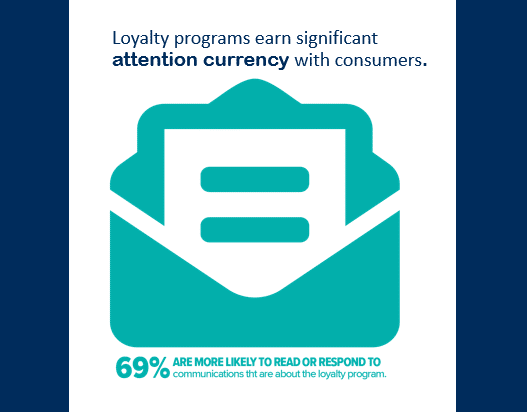
Our research showed that loyalty programs spark significant attention from customers, yet convincing consumers to engage with marketing communications is always a challenge. The exception is when that communication is bundled with holistic communications about your loyalty program. If you are executing correctly, customers have learned that loyalty messages are more targeted and relevant to them as individual customers than what they see from your brand in other streams or channels.
Our study confirmed that your loyalty program might be your most effective customer communications channel. 69 percent of study respondents said they were more likely to open, read and act on a brand communication if it comes from the loyalty program. So, the next time you have a critical message or offer to get in front of your customers, think about presenting it under the brand of your loyalty offering where its far more likely to be noticed.
Reward Redemption
When program members take a passive approach toward rewards redemption, or don’t redeem at all, there is a highly correlated belief that member disengagement is likely to occur. However, the results of this year’s study surprisingly showed that there is a trend towards members preferring to accumulate a bank of points, with 74 percent purposely saving their points and 50 percent saving with a. specific reward in mind.
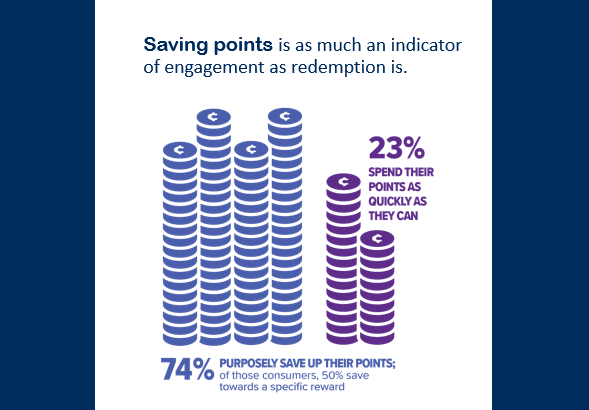
It seems that saving points is as much an indicator of engagement as redemption has always been thought to be. How can you respond to this insight? Rather than assume a non-redeeming member is at risk of churn, look instead to their overall level of spend and activity to build a more holistic assessment of their true level of engagement.
If a member is sitting on a pile of points AND is declining across other key behavioral metrics, that is the time to encourage them to redeem. Otherwise, you can assume their behavior is likely intentional. If you really want to know for sure, add a wish list to your mobile app or web site so that you can learn more about what the member is saving toward.
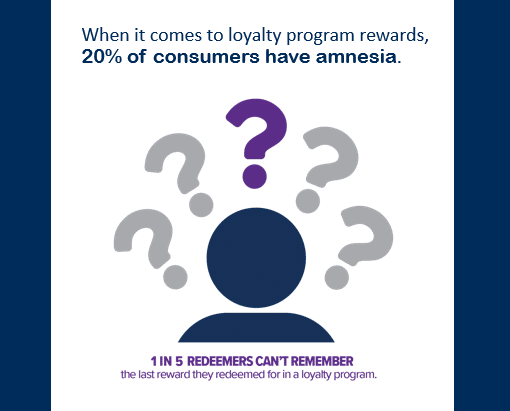
The experience of redeeming a reward remains the core value proposition of most loyalty programs. In fact, respondents rated loyalty rewards as second only to great products and services as their core driver for purchasing from a specific brand. Yet, 1 in 5 respondents said they were unable to recall the last reward they redeemed for in their favorite loyalty programs, suggesting a need for some fine tuning of the rewards experience.
Barry Kirk, VP of Loyalty Strategy at Maritz Motivation, suggested in our webinar that how you communicate about rewards strongly affects how successful you’ll be at creating a lasting positive Member impression:
“We tend to focus mostly on what rewards the program should offer, but it’s just as critical to think about you’ll communicate to members about the rewards experience. A well-designed communication plan will build anticipation prior to redemption, and then reinforce that positive experience afterward. When effectively timed and communicated, a member’s reward experience should result in a positive “memory halo” that lasts well beyond the moment of redemption, reinforcing their connection with the brand and their desire to start working toward their next reward.”
To Fee or Not to Fee
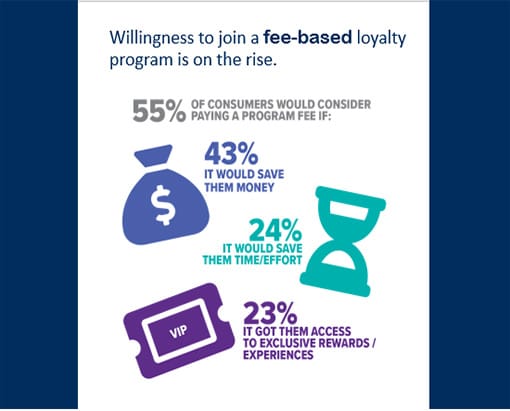
This year’s research also suggests that it might be the right time to test a fee-based option in your loyalty mix. The number of consumers willing to pay a program fee rose 10 percent over last year’s data, to 55 percent. As you triage this concept for your business, it’s important to note that many fee-friendly members are expecting an experience-based value prop (47 percent of respondents), even though a financial benefit also ranked as a top-rated justification (43 percent of respondents).
So, while introducing a fee can provide a major benefit in funding program costs, companies need to be sure they can provide the kind of experience that justifies this upfront financial commitment by members.
In our webinar, Barry shared the opinion that fee-based options for your program makes sense to test, but you might want to move with caution before making the entire program fee-based:
“Even though consumers say they are receptive to paying a fee, they likely need to be convinced that the benefits are worth it. Rather than put an immediate barrier to entry in place, its usually better to make the at least the entry level tier of your program free, but then test a ‘buy-up’ option that allows members to pay for higher status and/or additional perks or access.”
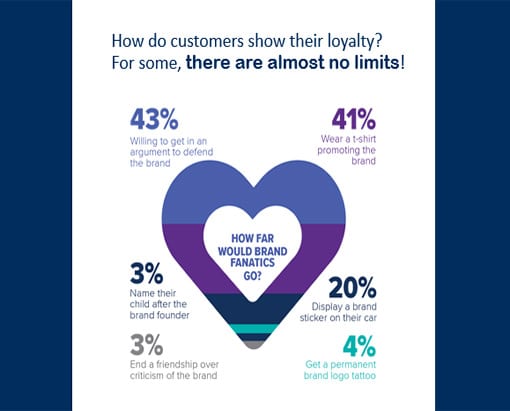
If you take into account what we have shared from this year’s research, and follow the recommendations from the webinar, you might find that there is virtually no limit to the ways some of your customers will express their loyalty to your brand. Many consumers are willing to be avengers, advocates and even defenders for their favorite companies. There’s even a small group who admittedly will go to even higher measures to show their loyalty. While Barry would not admit to sporting any permanent tattoos, he said that Starbucks and Southwest Airlines would be at the top of his list if he were to get some ink in recognition of his favorite brands.
The important question is, “What would your customers do to show their loyalty and advocate for YOUR brand?” Well … how will you know until you ask them?
The most interesting finding among this group is that 43 percent said they would be willing to defend their favorite brand when someone says something negative about it. That’s the space you want to be in – when your loyalists are not just recommending you but are willing to defend you! You might want to ask yourself and your marketing team the question: “Am I giving them a rationale to defend me?”
We have just scratched the surface of the results from the 2019 Maritz Loyalty / Wise Marketer Loyalty Landscape Study. Stay tuned for a follow-up webinar where Barry and Bill will go deeper into the research findings of this powerful report as we get to know the “Split Personality of Loyalty”. And don't miss when the Study is released! Reserve your copy of the Study here.
Download the 8 Key Insights:


